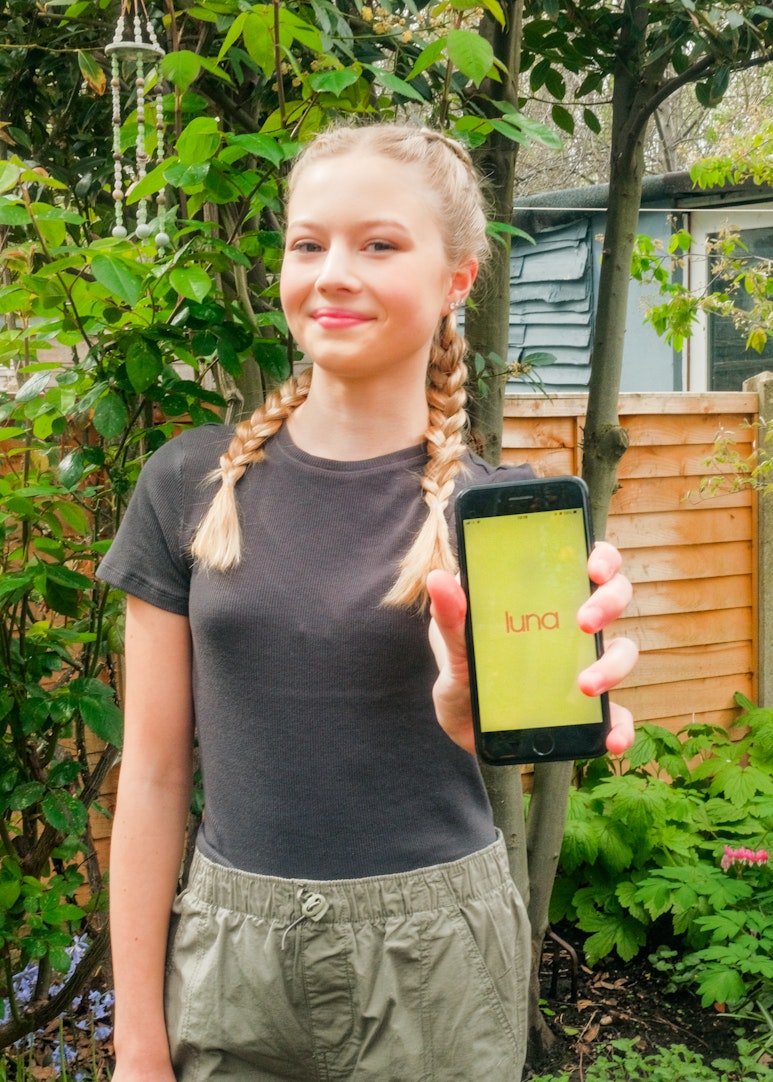
What is co parenting?
Separated parents working together

Quick summary
- Co-parenting is when separated or divorced parents work together to raise their child despite living in different homes
- It focuses on communication, stability and putting the child’s wellbeing at the centre
- luna can support your daughter emotionally as she navigates two households, changing routines and big feelings

What is co-parenting?
Co-parenting is a shared parenting arrangement in which two separated or divorced parents both remain actively involved in raising their child.
It’s not about living together or agreeing on everything, it’s about:
- communicating respectfully
- sharing responsibility
- keeping routines predictable
- making decisions with the child’s best interests in mind
For teens and pre-teens, co-parenting can be especially helpful because the teenage years are already filled with change.
Having stability across both homes can make a big difference to how supported and secure they feel.
What does co-parenting look like day-to-day?
Co-parenting varies across families, but common examples include:
Shared routines
Both homes follow similar expectations about bedtime, screens, homework or chores.
Joint decision-making
Big decisions – schooling, health, activities – are discussed together rather than unilaterally.
Smooth transitions
Parents communicate about what the child needs when moving between homes (school items, clothes, emotional needs).
Respectful communication
Even if parents disagree, conversations stay civil and focused on the child.
Showing unity
Teens know both parents are still a team – even if they’re no longer a couple.
Why co-parenting can be helpful for teens
Separation can be unsettling for young people, but co-parenting helps reduce uncertainty by providing:
- consistency
- stability
- predictable expectations
- reassurance that both parents remain involved
Teens may not always say it, but clear communication and collaboration between parents often make them feel safer and more supported during an already turbulent stage of life.
Common challenges of co-parenting
Even with the best intentions, co-parenting isn’t always easy.
Different parenting styles
One parent may be more permissive, the other more structured. (If you’re curious, our guides on permissive parenting and helicopter parenting may help.)
Emotional tension
Past relationship issues or even new present romantic relationships can spill into co-parenting conversations.
Inconsistent routines
If rules differ a lot between homes, teens may feel confused or conflicted.
Teen pushback
Teens may test boundaries or play parents against each other, especially when communication is strained.
None of these issues mean co-parenting is failing – they are simply signs that adjustments may be needed.
How to co-parent effectively
Healthy co-parenting doesn’t mean being perfect. It’s about being as consistent and child-focused as possible.
1. Keep communication predictable and calm
Use texts or shared calendars for logistics rather than emotional conversations.
2. Separate adult issues from parenting
Disagreements between parents shouldn’t become a burden on the teen.
3. Agree on a few non-negotiables
These might include safety rules, school expectations or screen time limits.
4. Encourage your teen to talk openly
Teens may feel caught in the middle – having a safe, neutral space to express feelings is important.
5. Be flexible when needed
Teens’ schedules, friendships and emotional needs shift quickly.
6. Focus on connection, not competition
Teens benefit when parents avoid comparing households or trying to “win” their approval.
How co-parenting feels from a teen’s perspective
Teens often say the hardest part is not the separation itself, it’s the tension or inconsistency between homes.
They may experience:
- guilt about enjoying one home more
- stress about switching environments
- pressure to keep both parents happy
- uncertainty about rules
- difficulty remembering what’s where (especially school or period items)
- hormonal and emotional shifts that make transitions harder
This is where luna can make a meaningful difference.
How luna can support your daughter through co-parenting
The teen years are emotional even in one household – two households can make things feel even more complicated.
luna helps by offering your daughter:
A neutral, safe space
She can ask questions anonymously and get doctor-reviewed support on periods, hormones, friendships, mood and growing up, without the pressure of choosing which parent to talk to.
Predictability across households
With mood and cycle tracking, your daughter can understand her symptoms and emotional patterns no matter which home she’s in.
luna also helps her plan for her periods if she’s started, which can make packing the right things to stay over at either house much more practical!
Private guidance during transitions
luna’s articles, videos and quizzes explain anxiety, stress and big emotions in ways teens relate to – helping her feel grounded on days she moves between homes.
Less parent conflict
When teens get reliable answers from experts, they’re less likely to become the “go-between” in difficult conversations.

Co-parenting doesn’t require perfect harmony, just consistent care. Even small signs of teamwork from both parents can make a teen feel supported, secure and valued.
And with luna giving your daughter a private space to understand her feelings, her hormones and her changing world, she’s not navigating the transition between two homes alone.
How we created this article:
luna's team of experts comprises GPs, Dermatologists, Safeguarding Leads and Junior Doctors as well as Medical Students with specialised interests in paediatric care, mental health and gynaecology. All articles are created by experts, and reviewed by a member of luna's senior review team.
We'd love to keep in touch!
Sign up to our parent newsletter for emails on the latest teen trends, insights into our luna community and to keep up to date
By signing up, you are agreeing that we can use your email address to market to you. You can unsubscribe from marketing emails at any time by using the link in our emails. For more information, please review our privacy statement.